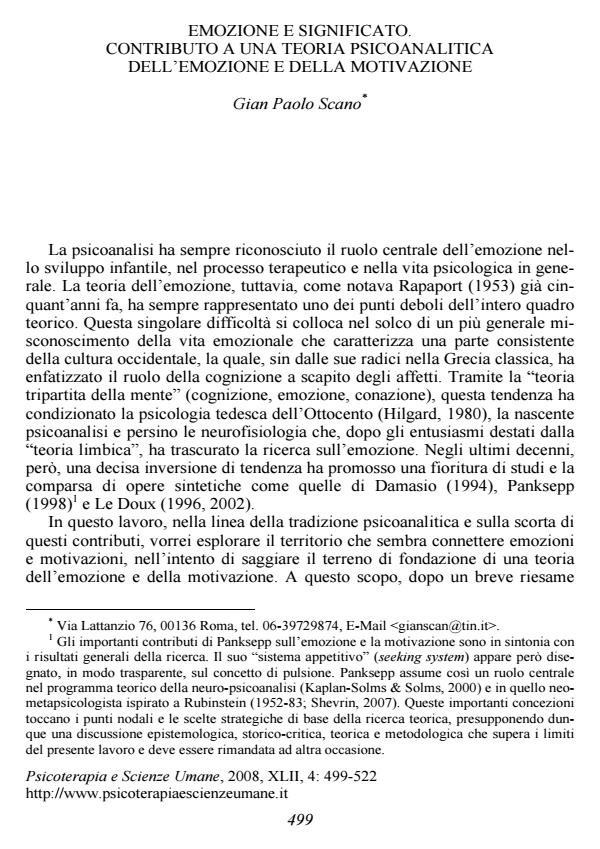Emozione e significato. Contributo a una teoria psicoanalitica dell'emozione e della motivazione
Titolo Rivista PSICOTERAPIA E SCIENZE UMANE
Autori/Curatori Gian Paolo Scano
Anno di pubblicazione 2008 Fascicolo 2008/4 Lingua Italiano
Numero pagine 24 P. 499-522 Dimensione file 178 KB
DOI
Il DOI è il codice a barre della proprietà intellettuale: per saperne di più
clicca qui
Qui sotto puoi vedere in anteprima la prima pagina di questo articolo.
Se questo articolo ti interessa, lo puoi acquistare (e scaricare in formato pdf) seguendo le facili indicazioni per acquistare il download credit. Acquista Download Credits per scaricare questo Articolo in formato PDF

FrancoAngeli è membro della Publishers International Linking Association, Inc (PILA)associazione indipendente e non profit per facilitare (attraverso i servizi tecnologici implementati da CrossRef.org) l’accesso degli studiosi ai contenuti digitali nelle pubblicazioni professionali e scientifiche
Emotion and meaning: a contribution to the psychoanalytic theory of affect and motivation - In this paper, the concept of emotion is derived from neuroscience as a biological regulatory system which operating through a process of evaluation, anticipation and attribution of meaning fosters the construction of bodily marked schemas. Such embodied schemas are connected to the symbolic realm. Language acquisition and use of metaphors allow for processes of transformation and displacement leading to infinite outcomes of a schema. In this way, complex individual meanings are constructed and, thanks to emotions, these meanings elicit powerful motivations (whether positive or negative) virtually in all areas even in transference and defense without the need of assuming specific motivational systems. Such process could be understood as the basic mechanism of motivation. [KEY WORDS: theory, emotion, motivation, somatic marker, metaphor];
Gian Paolo Scano, Emozione e significato. Contributo a una teoria psicoanalitica dell'emozione e della motivazione in "PSICOTERAPIA E SCIENZE UMANE" 4/2008, pp 499-522, DOI: